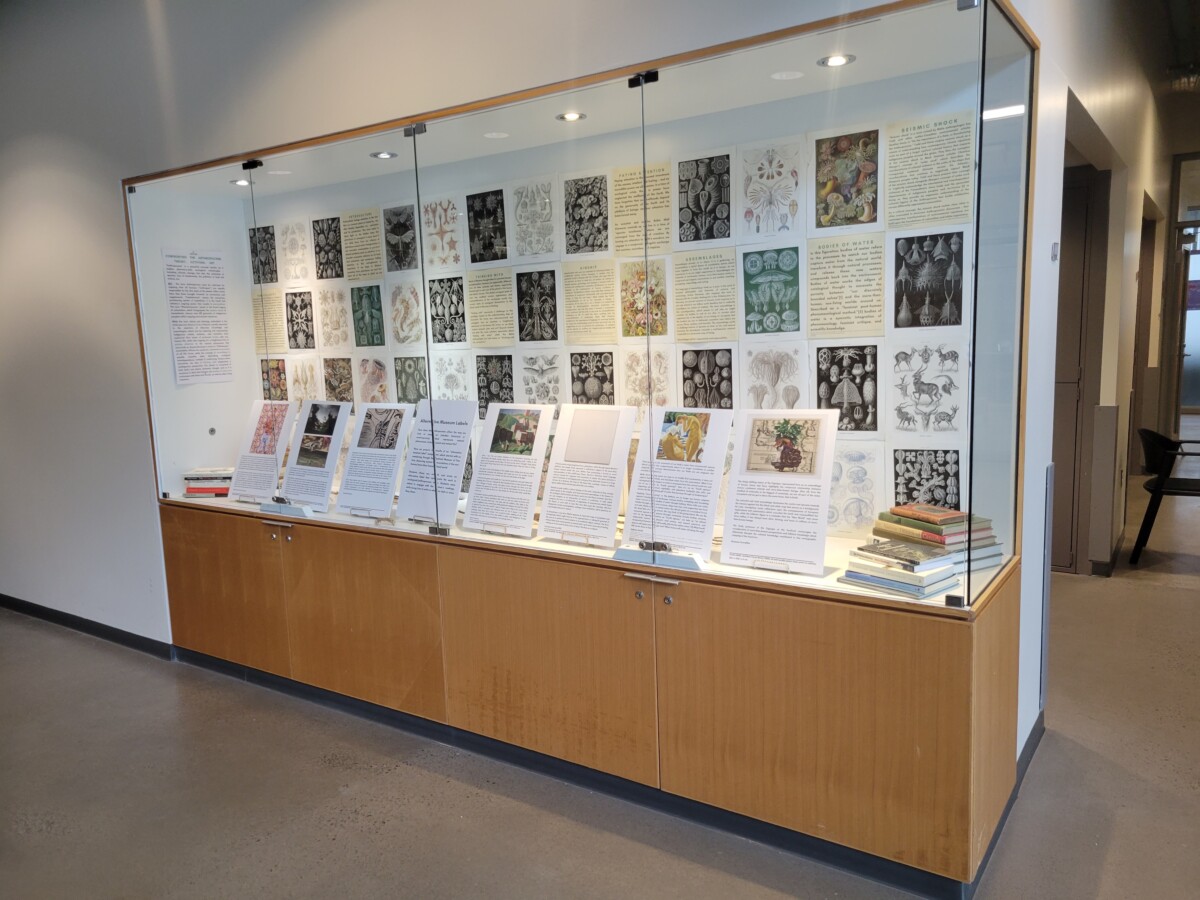Concordia’s Faculty of Fine Arts celebrates the collaborative research project of a graduate seminar.
The vitrine display space at the core of the Faculty of Fine Arts in Concordia’s EV building currently hosts the cumulative research project that the students of Dr. Johanne Sloan’s graduate seminar, Confronting the Anthropocene: Theory, Activism, and Art, collaborated on last winter. The vitrine aims to showcase the depth of creativity among Concordia’s fine arts and art history students, and this dynamic, colourful, and eye-catching display fits its purpose.
The “Anthropocene” is a concept that emerges in discussions surrounding the ecological crisis as the reality of climate change forces us to reconcile with the natural world. Dr. Sloan explains in the curatorial statement that the term problematically implies that “all humans (“anthropos”) are equally responsible for the dire state of the planet.” The display offers a lexicon of alternative terms that more precisely describe the reality of who and what ought to be held proportionally accountable.
Caro DeFrias served as the vitrine’s coordinator during the 2022-2023 academic year. They described the vitrine as an “exciting and urgent space” that stands as a celebration and a site of exercise for the Concordia student body and its classes. While the coordinator serves a largely facilitative role, DeFrias participated as a curator for the final project of the year along with their seminar peers. This display is a testament to their creative vision.
The project presented the students with the question of how the concept of the Anthropocene impacts the way they look at visual art that represents the natural world. The students each reinterpreted a work of art and crafted an “alternative museum label” for it that deliberately responds to this question.
DeFrias writes of Agnes Martin’s The Rose: “In presenting a rosy haze, Martin appears to reject the traps of symbolism and iconography which might lead us to the appropriation or taking-for-granted of the rose as a symbol of human desire or an aesthetic object. Instead, The Rose undoes these lines and presents us with the grid and a new way of looking — asking us to feel and tenderly come to know The Rose as a subject.” The grid speaks to the networks that constitute the relationship between human behaviour and the agency of non-human species.
The exhibit draws from the existing literature that shaped the backbone of Sloan’s course, including the work of Black feminist scholar Christina Sharpe, Métis anthropologist Zoë Todd, Blackfoot scholar Leroy Little Bear, and ecofeminist scholar Donna Haraway, among others. The gridded backdrop of the vitrine display intertwines this vocabulary among imagery of flora and fauna, visually demonstrating the entanglements between humanity and nature.
The vitrine can be found across from the graduate seminar room (EV 3.760) and will be up until a new coordinator is selected in late September.
